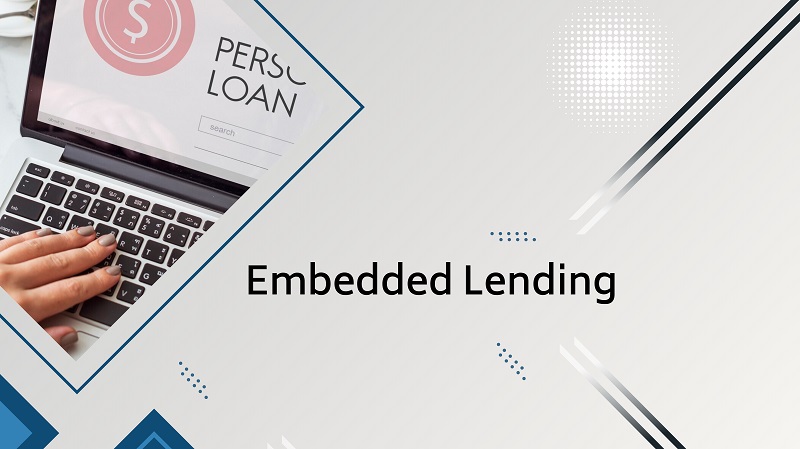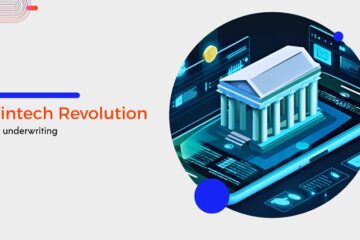Embedded lending is rapidly emerging as a transformative financial service that allows consumers and businesses to access credit directly within the platforms they are already using. Unlike traditional loans that require separate applications through banks or financial institutions, embedded lending seamlessly integrates loan offerings into digital platforms, e-commerce sites, payment gateways, and business management software. This makes accessing credit faster, more convenient, and personalized, which is revolutionizing how consumers and small businesses (SMEs) manage their finances.
What Is Embedded Lending?
Embedded lending refers to the integration of lending services directly into non-financial platforms, such as e-commerce websites, digital wallets, ride-sharing apps, and accounting software. With embedded lending, users can access loans or credit lines without leaving the platform, often in just a few clicks, making the loan application process much more seamless and faster than traditional lending.
- For consumers: Embedded lending allows shoppers to get instant credit or Buy Now, Pay Later (BNPL) options at the point of sale, enabling them to spread the cost of purchases over time.
- For businesses: SMEs can obtain working capital, business loans, or equipment financing directly within the platforms they use to manage their operations, such as invoicing software or e-commerce platforms.
Drivers of Growing Demand for Embedded Lending
Embedded lending is not technology driving change, it’s demand. The demand is arising from both consumers and small businesses. The demand for embedded lending has surged in recent years, driven by several key factors:
1. Shift Towards Digitalization
As more consumers and businesses move online, the demand for frictionless financial services integrated within the platforms they already use has grown. Embedded lending meets this demand by offering a convenient, digital-first solution.
2. Growth of E-Commerce
The rise of e-commerce has fueled the demand for embedded lending, especially through BNPL services, which have become increasingly popular as they allow consumers to finance their purchases over time with little to no interest. Embedded lending solutions in e-commerce platforms provide shoppers with instant credit options during checkout.
- Example: Platforms like Shopify and Amazon offer embedded lending options, allowing both merchants and buyers to access financing options directly within the platform.
3. Financial Inclusion
Embedded lending opens up new opportunities for financial inclusion, particularly for unbanked or underbanked populations and small businesses that may not have access to traditional banking loans. By integrating with platforms already in use, embedded lending can offer credit to those with limited financial history but reliable transaction data.
- Example: Embedded lending solutions analyze alternative data, such as e-commerce sales or invoicing history, allowing businesses with limited credit histories to qualify for loans based on their platform activity.
Benefits of Embedded Lending for Consumers
Embedded lending offers several advantages for consumers, particularly in the areas of convenience, accessibility, and personalization.
1. Seamless Access to Credit
Consumers can access credit directly at the point of sale, whether online or in-store. This reduces the friction associated with traditional loan applications and eliminates the need to visit a bank or lender. Credit decisions are often made instantly, enabling consumers to receive funds quickly.
- Example: Buy Now, Pay Later (BNPL) services such as Affirm, Klarna, and Afterpay allow consumers to make purchases and pay in installments over time, with the option to finance products within seconds.
2. Increased Flexibility
Embedded lending provides flexible payment options, allowing consumers to choose how they want to pay for purchases. Whether it’s paying in installments, deferring payments, or using low-interest credit, embedded lending offers consumers more control over their finances.
- Example: A shopper can choose to pay for a large purchase over six months with 0% interest, giving them financial breathing room while managing their expenses.
3. Personalized Credit Offers
Embedded lending platforms can use AI and data analytics to offer personalized credit products tailored to an individual’s spending habits, financial profile, or shopping behavior. This enhances the user experience by providing more relevant lending options and improving credit approval rates.
Benefits of Embedded Lending for Small Businesses (SMEs)
For small businesses, embedded lending offers unique opportunities to access working capital, grow their operations, and manage cash flow more effectively.
1. Streamlined Access to Business Loans
Small businesses can apply for loans or credit lines directly within the software or platforms they use to manage their day-to-day operations, such as accounting software, e-commerce platforms, or payment gateways. This integration eliminates the need for time-consuming loan applications and improves access to capital.
- Example: Shopify Capital offers embedded lending to merchants on the Shopify platform, providing financing based on a business’s sales activity without the need for a traditional loan application.
2. Improved Cash Flow Management
Embedded lending solutions help SMEs manage cash flow by offering flexible loan products, such as invoice financing or revenue-based financing. These products allow businesses to access funds in real-time based on incoming invoices or sales, improving liquidity during slow seasons or periods of rapid growth.
- Example: Platforms like QuickBooks and Xero offer embedded lending services that allow businesses to get advances on unpaid invoices, helping them manage their working capital more effectively.
3. Data-Driven Lending Decisions
Unlike traditional lenders that rely on credit scores or extensive financial histories, embedded lenders often use alternative data to assess creditworthiness. For small businesses, this means that factors like sales volume, customer loyalty, and platform activity can be considered, making it easier for startups or businesses with limited credit history to qualify for loans.
- Example: An e-commerce business with consistent sales on a platform like Amazon may qualify for embedded loans based on their sales performance, even if they lack an extensive credit history.
How Embedded Lending Is Reshaping the Lending Landscape
Embedded lending is reshaping the traditional lending landscape in several key ways:
1. Disintermediation of Traditional Lenders
By integrating lending directly into non-financial platforms, embedded lending bypasses traditional banks and financial institutions. This opens the market to FinTechs, e-commerce platforms, and software providers, offering faster and more flexible lending solutions to consumers and businesses.
- Example: Companies like Square and PayPal now offer embedded lending to small businesses, directly competing with traditional banks by offering more convenient, data-driven lending solutions.
2. Real-Time Lending
Embedded lending allows for real-time credit decisions, leveraging AI and machine learning to analyze user data and provide instant loan approvals. This is a major shift from the lengthy approval processes typically associated with traditional loans.
- Example: Real-time lending allows businesses to access working capital within hours, helping them respond quickly to opportunities or challenges, such as unexpected inventory needs.
3. Enhanced Customer Experience
The seamless integration of lending into everyday digital interactions significantly improves the customer experience, offering a more convenient way to access credit. This leads to higher loan conversion rates, as users are more likely to accept loan offers when they are presented within the context of their immediate needs, such as during a purchase or business transaction.
Challenges and Considerations
While embedded lending offers significant benefits, there are some challenges and risks that need to be addressed:
1. Regulatory Compliance
The rapid rise of embedded lending presents regulatory challenges, as existing lending regulations may not fully apply to the non-financial platforms offering these services. Ensuring compliance with lending laws, consumer protection, and data privacy regulations will be crucial as embedded lending continues to grow.
2. Risk of Over-Borrowing
For consumers, embedded lending, especially in the form of BNPL, can lead to over-borrowing if credit is extended too easily without proper credit checks or affordability assessments. Platforms must ensure responsible lending practices to avoid high levels of consumer debt.
- Example: Some BNPL providers have faced criticism for allowing users to take on multiple loans across platforms, leading to potential repayment challenges.
Future Opportunities for Embedded Lending
As businesses and consumers increasingly seek convenient, tailored lending solutions, the future of embedded lending holds immense potential across various industries. Here are some key future opportunities for embedded lending:
1. Expansion into New Markets
As embedded lending continues to grow, there are opportunities for expansion into emerging markets where financial inclusion is still a challenge. Platforms that can offer microloans or small business financing in these regions could drive significant economic development.
2. Personalization Through AI and Machine Learning
The use of AI and machine learning will further enhance the personalization of embedded lending, enabling platforms to offer credit solutions that are tailored to individual user needs in real-time.
3. Integration with Blockchain and Decentralized Finance (DeFi)
There is potential for embedded lending to integrate with blockchain technology and DeFi platforms, allowing for more decentralized lending solutions. This could further reduce costs and improve access to credit for consumers and businesses in underserved markets.
Embedded lending represents a transformative opportunity for consumers and small businesses, offering seamless, convenient, and personalized access to credit directly within the platforms they already use. By improving access to capital, streamlining the borrowing process, and enabling real-time lending, embedded lending is reshaping the financial landscape and driving the growth of the digital economy.
As the demand for integrated financial services grows, embedded lending is expected to expand further, offering new opportunities for financial inclusion, business growth, and consumer empowerment. However, ensuring responsible lending practices and regulatory compliance will be critical to sustaining the long-term success of embedded lending models.








